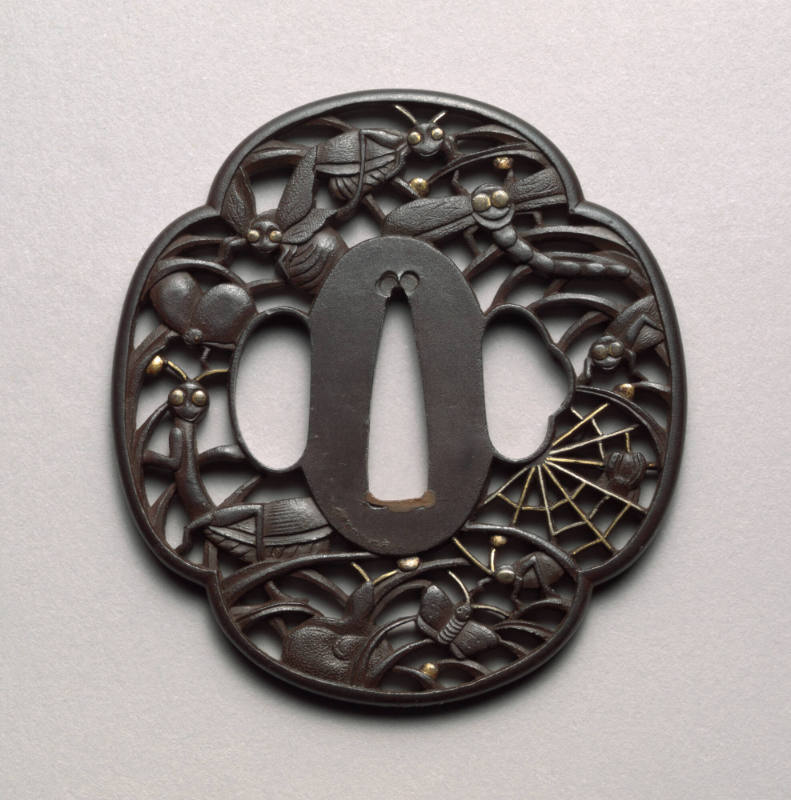

Object Details
Culture
Japan
Edo period
Date
ca. 1850
Medium
Iron
Dimensions
2 15/16 x 2 3/4 inches (7.5 x 7 cm)
Credit Line
Memorial gift from the Estate of Charles W. Hay, Class of 1925
Object
Number
73.005.006
BRIEF DESCRIPTIONThis is a sword guard from a samurai sword.WHERE WAS IT MADE?This item was made in (…)
BRIEF DESCRIPTIONThis is a sword guard from a samurai sword.WHERE WAS IT MADE?This item was made in Japan during the Edo period (1615-1868).HOW WAS IT MADE?This tsuba was handcrafted from iron.HOW WAS IT USED?The tsuba, or sword guard, lies between the hilt and the blade of a samurai sword. The tsbua served to prevent the hand from sliding down the hilt and onto the blade during combat. It consists of an obverse (front) and reverse side. The obverse side is the one that would face the opponent, while the reverse side would come in contact with the hand of the user. For this reason, traditionally tsuba were kept smooth on the reverse side.WHY DOES IT LOOK LIKE THIS?During the peaceful Edo period, sword fittings were seldom created for swords that were to be used in battle. Instead, these fittings, such as the tsuba, became a medium for artistic work, appreciated for their exquisite workmanship, variety of designs, and refined beauty. Whereas until around the 1650s, only a small number of motifs were typically used to decorate the sword fittings, in the following years of the Edo period the artists who made these fittings took inspiration from images in books, characters in folktales, and other popular cultural and natural motifs. Swords and their fittings served as status items for samurai. A sword owner would select motifs that expressed his tastes, values and interests.This particular tsuba is decorated with numerous insects and other small animals, such as a cricket, spider, dragonfly, and butterfly.Notice the shape of the central hole of the tsuba; it permitted the blade of the sword to pass through. Frequently one or two secondary holes are seen on tsuba; these were made to accommodate other small sword fittings, the kozuka (a small utility knife) and the kogai (a small hairdressing tool shaped like a skewer.)












